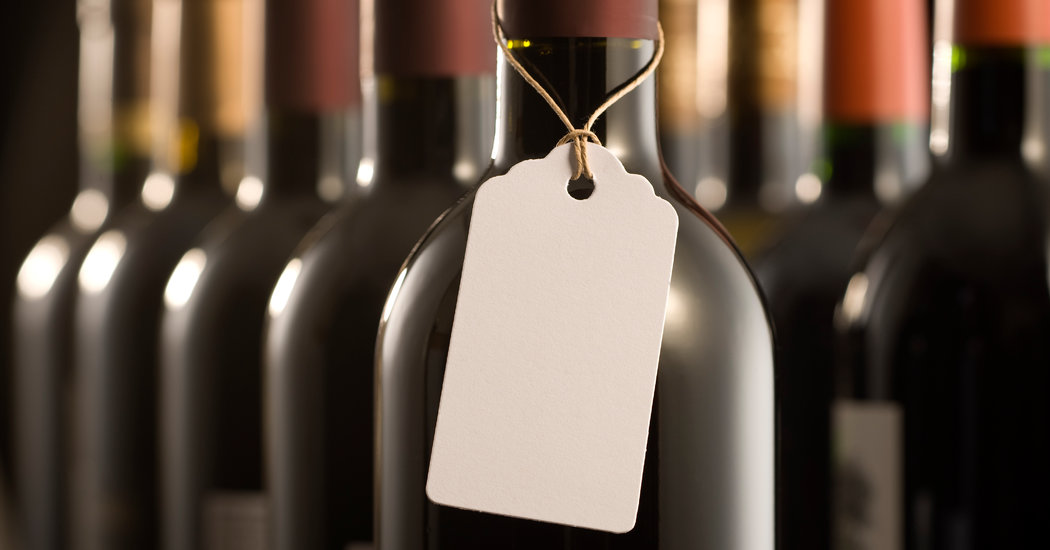
The coming 25 percent American tariff on certain European foods, drinks and other products will hit a lot of people hard, but few harder than Jon-David Headrick.
Mr. Headrick, who lives outside Nashville, operates Jon-David Headrick Selections, which imports French wines exclusively, focusing on small family estates in the Loire Valley and other parts of northern France.
When the tariffs go into effect on Oct. 18 — after a 15-year dispute over subsidies the European Union gives to Airbus, its largest aircraft manufacturer — they will affect wines from those areas more than those from southern France.
Only wines below 14 percent alcohol will be taxed, which hits squarely in the cooler climate regions like Sancerre and Muscadet that make up Mr. Headrick’s portfolio. Even in this era of climate change, those wines rarely go over the 14 percent mark, unlike wines from warmer regions in southern France, which surge regularly above it.
“The only good news for me is that sparkling wine is excluded,” Mr. Headrick said. “But 70 percent of my wine will be taxed.”
Many other importers will also face difficulties. David Bowler of David Bowler Wine in New York imports a lot of French wines, as well as German and Spanish bottles, which also will be taxed. But he also has in his import and distribution portfolio a fair number of wines from Portugal and Italy, which are excluded from the tariff, as well as wines from North and South America.
Mr. Headrick is that rare specialty importer whose portfolio will bear the brunt of the new tariffs. Most French wine specialists draw from around the country; they are likely to have producers in the southern Rhône Valley and Languedoc, where wines more often than not have alcohol levels above 14 percent.
“One of the ways I have been successful is keeping my head down and focusing on the Loire,” said Mr. Headrick, whose portfolio includes excellent producers like Domaine Vacheron of Sancerre and Damien Laureau of Savennières. “This is coming back to bite me.”
Why the seemingly arbitrary line of 14 percent? That’s a good question.
For decades the federal Alcohol and Tobacco Tax and Trade Bureau, which regulates taxes on alcoholic beverages, defined table wine as having a maximum alcoholic strength of 14 percent. Those beverages with 14 to 24 percent alcohol are considered dessert wines, and are taxed at a different rate.
Up until the mid-1980s, this division might have made sense. But since then, alcohol levels of ordinary wines have shot upward, because of a combination of climate change, scientific and technical know-how, improved farming and changing aesthetic preferences. The 14 percent line now cuts through the heart of most table wines.
Similarly, sparkling wine is yet another category as far as the tax authorities are concerned.
But when the Republican tax bill became law in 2018, the line for table wine increased to 16 percent. It’s not clear why the tariffs use the older standard.
Retail prices will certainly increase on French, Spanish and German wines, but it’s not known by how much.
Mr. Bowler said that if producers, importers and distributors all accept smaller profit margins, consumers will see a lesser rise in prices, especially since currency exchange rates have recently been favorable for American importers because of the strong dollar.
“If we give up some of the exchange margin we’ve been enjoying, we may hold it at 10 percent for the consumer,” Mr. Bowler said of the price increase.
Mr. Headrick was not so optimistic. While he said it was possible that each link in the sales and distribution chain could sacrifice some of its margin, he would not be surprised to see retail prices rise 30 percent. Either way, by those estimates, a $20 Sancerre could cost anywhere roughly from $22 to $27.
Mr. Headrick said he was most concerned about the plight of small producers who make lower-priced wines, where the margins are already thin. They will not be nearly as able as big producers to absorb even a 5 percent difference.
He was most perplexed, he said, by the fact that, though the subject of the trade dispute was the airplane industry, aircraft sales will face only a 10 percent tariff.
“It seems insanely unfair that big industry isn’t being hit here,” he said. “They’re going after farmers, not just wine, people raising cows, making cheeses. It seems incredibly unfair that farmers are paying the price with the Chinese tariffs, and they’re paying the price on the other side of the ocean.”




